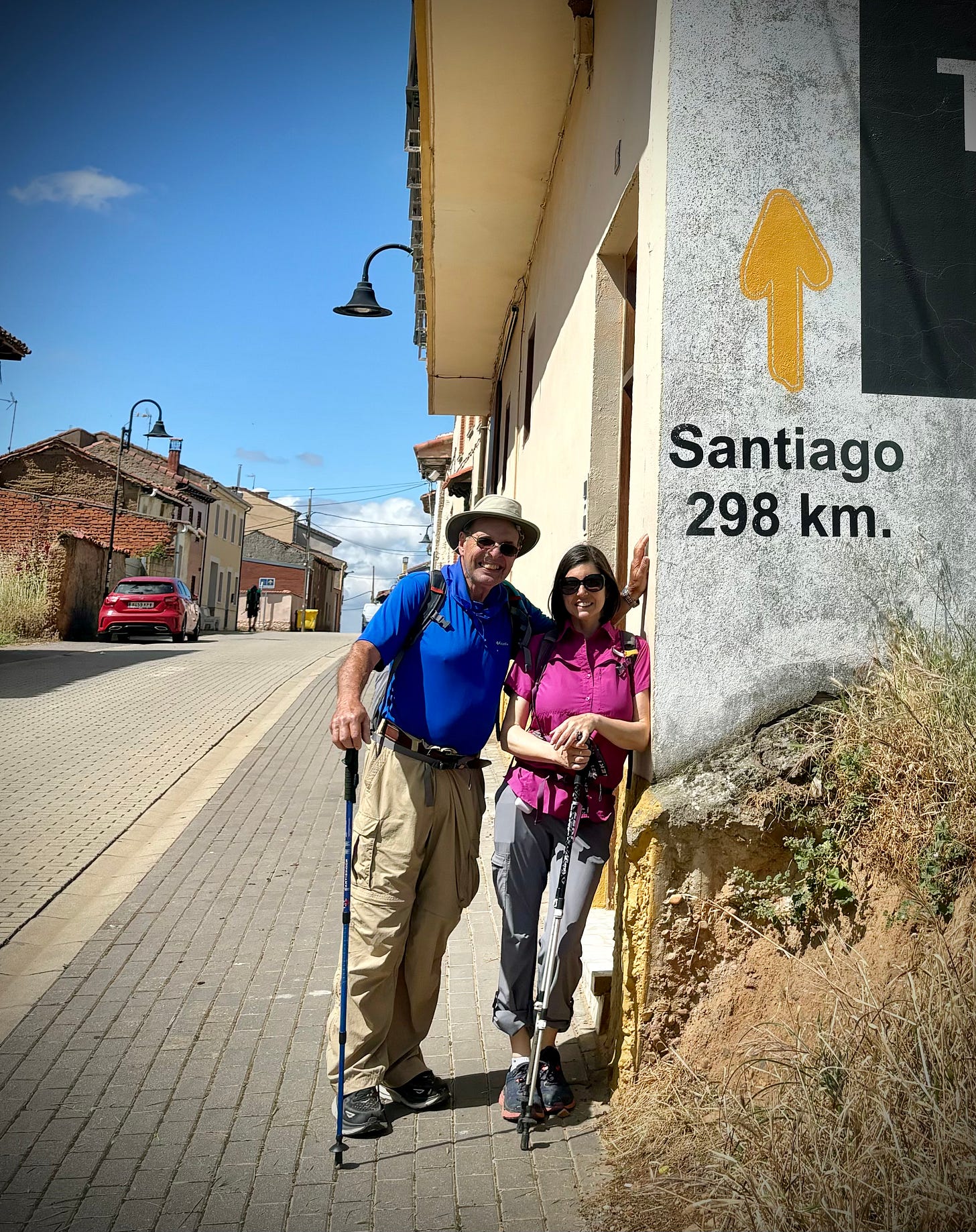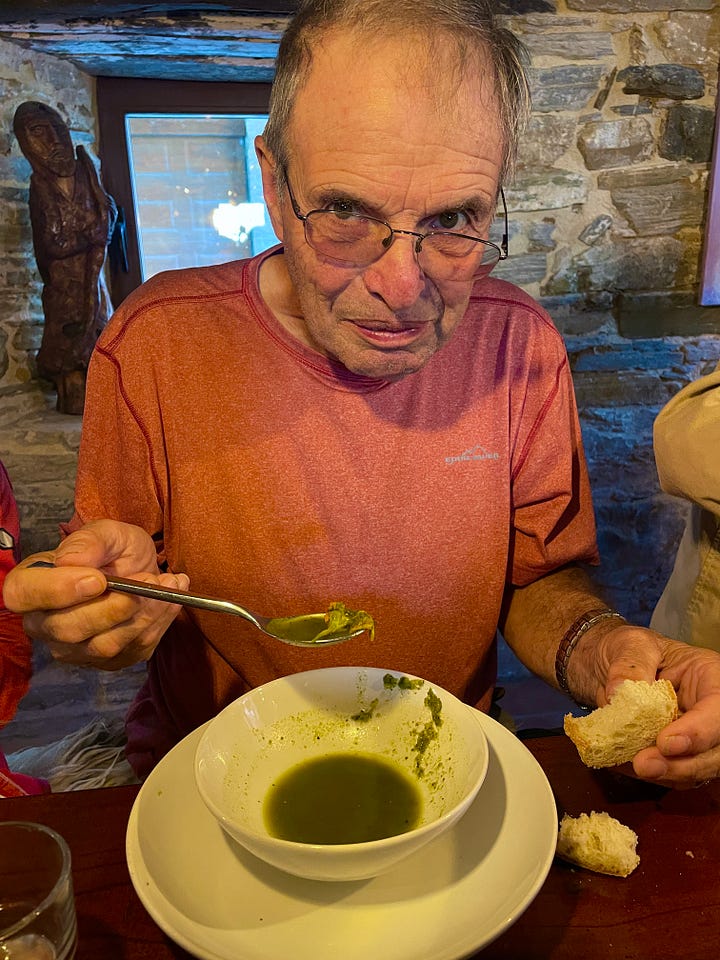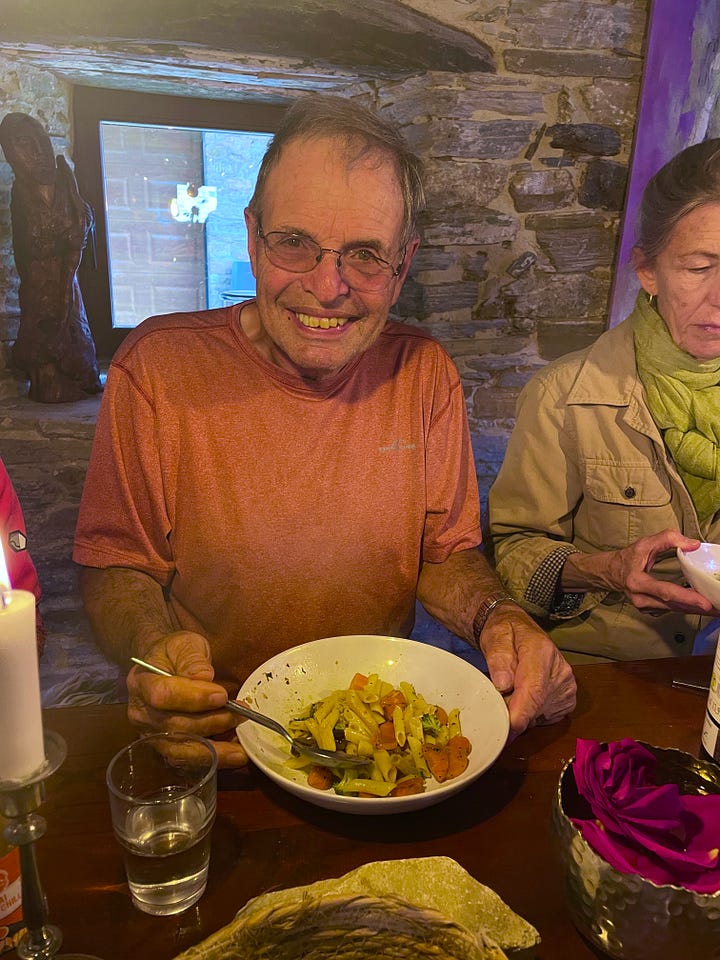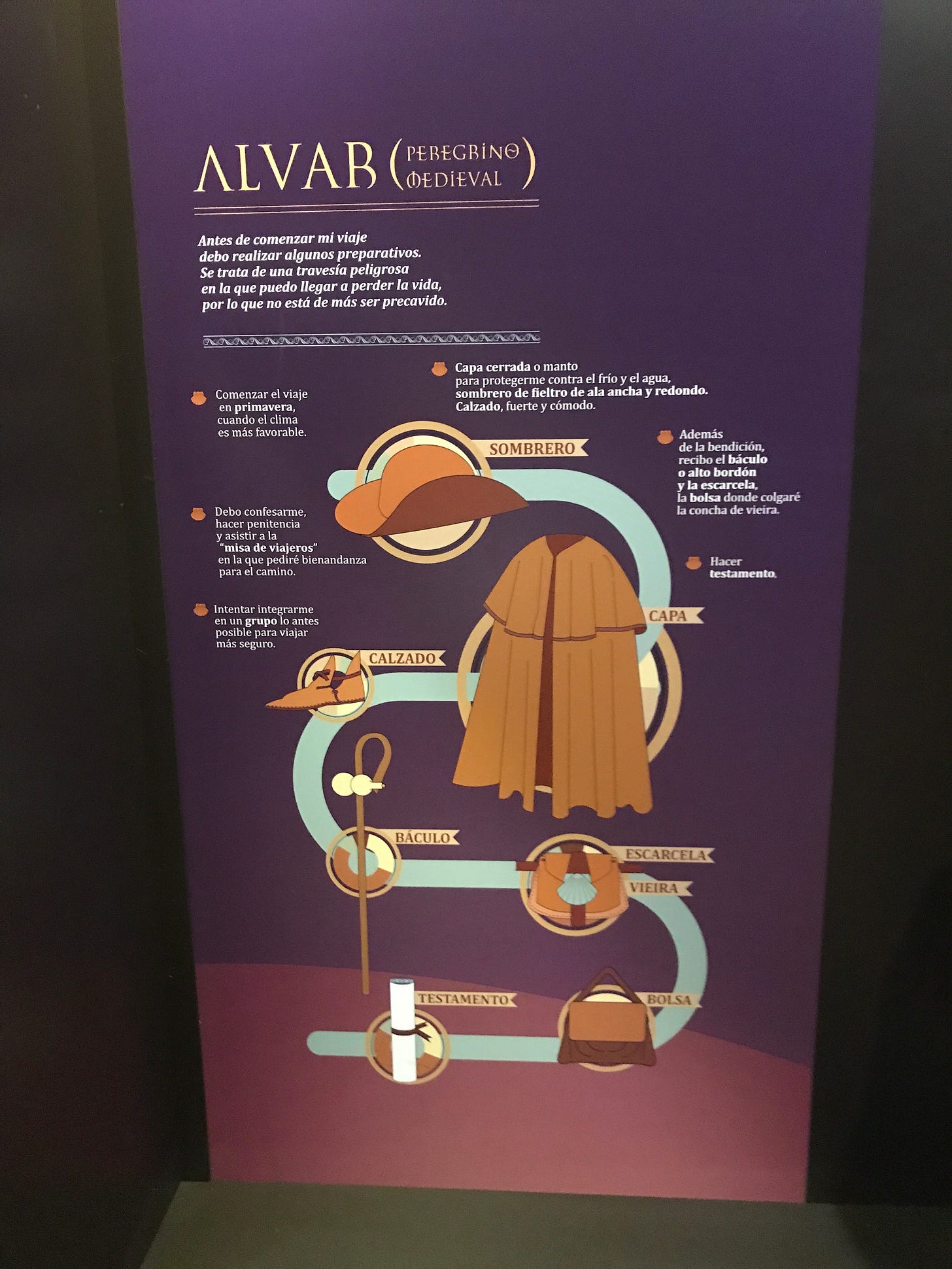008: Do You Have to Stay in Hostels on the Camino de Santiago?
Think the Camino means hostel bunk beds? Not necessarily.
“The Camino? I’d love to, but I don’t want to stay in hostels.” I’ve heard this dozens of times now. There is nothing that says you must stay in hostels (known as albergues) when walking the Camino de Santiago.
While hostels are an important part of the Camino experience, they are certainly not the only option for overnight accommodation.
If you prefer more privacy at night, you can still have a great Camino experience without ever sleeping in a shared dormitory. That being said, albergues do hold a special place in my heart and in the Camino world at large, and even though almost all of my clients book private rooms, I do encourage them to have the experience of an albergue at least once if possible. How? Keep reading.
The Evolution of Camino Accommodations
Historically, medieval pilgrims relied on monasteries, hospices, and private homes for shelter. The modern network of albergues, however, didn’t come into existence until much later. While some small albergues were set up earlier, the network of public albergues as we know them today began in 1993. It was a Holy Year (a day when the feast day of Santiago/St. James falls on a Sunday), so the regional government of Galicia (the autonomous community in Spain where Santiago de Compostela is located) officially established a network of public albergues. This was part of a larger effort to revitalize the Camino and prepare for the growing number of pilgrims they hoped to see.
Since then, albergues have expanded to most, if not all, of the Camino routes in Spain, providing affordable accommodation along the route. They range from bare-bones municipal hostels (usually available only to those walking with a pilgrim credential) to private albergues run by families—which sometimes offer private rooms and additional amenities.
The Spirit of the Albergues (Even if You Don’t Sleep in One)
There’s a reason why so many of us pilgrims have a special place in our hearts for albergues. It’s not just about having a cheap place to stay—it’s about the community experience. In albergues, you meet fellow pilgrims from around the world, share stories over communal meals, and sometimes even participate in traditions. I’ve participated in optional non-denominational services where we express lessons learned so far or where we write something we’re hoping for on this walk and drop it into a box. We then pull out the words previous pilgrims have written (those that did this process months ago), read them aloud to the group, then burn them in a spirit of putting those ideas out into the world.
If you prefer privacy but still want to experience the spirit of the albergues, some of them have—in addition to dorm rooms—a limited number of private rooms. These aren’t always easy to find, but sites like Gronze.com can help. When I work with clients who want this experience, I show them how to find these unique stays—whether by using tools like Gronze or understanding what to look for in an albergue listing—so they can enjoy both privacy and community on their Camino.
The "Real Pilgrim" Debate: Do Accommodations Matter?
Some people argue that “real” pilgrims only stay in albergues, walking the Camino in the most communal and traditional way possible. But if we are looking for the most “traditional” way, we’d not have backpacks nor dry-wicking clothes; we wouldn’t have any modern-day blister treatments; there would be no plastic water bottles nor cell phone apps; we wouldn’t take pictures.
Like so much about the Camino de Santiago, there are many options. Everyone will have their opinion. But when you get back to your home country and tell people you walked 60, 150, 500 miles across Spain, no one is going to ask if you slept in hostels. Nor do they care. The bigger goal was what was accomplished—not where you slept.

I’ve met plenty of pilgrims who stayed exclusively in private rooms, and their Camino was no less meaningful than those who slept in dorms. Was it different from my experiences staying in hostels? Absolutely. But at the end of the day, the true spirit of the Camino isn’t about where you rest your head—it’s about the connections you make, the reflections you have, and the journey itself.
My Own Camino Experience: The Best of Both Worlds
On my own Caminos, I have stayed in every type of accommodation available: hotels, hostals, hostels (these three sound similar but they are, in fact, quite different!), pensions, private and public albergues, paradors, posadas. I’ve even spent quite a bit of time in an albergue that has no running water nor electricity—it is magical, but not for everyone.
Most recently my father and I were staying in a private room in a family run hotel. Walking around the village, a new Camino friend and I saw a sign inviting people into the garden of a nearby albergue. After a conversation with the owner, we were invited to come back in a few hours for the communal dinner—and bring whomever else. My father has now come to love these meals and so that evening we found ourselves at a long wooden table of 12, eating kale soup (which, if you know my father you know what a miracle that was) and pasta primavera while sharing stories with pilgrims from five different countries.


That night, I returned to my private room feeling full—not just from the food, but from the warmth of the Camino spirit. This perfect balance of privacy and community can be found without participating in a communal meal, of course. Pilgrims from around the world gather each evening in local restaurants and bars, sharing stories and forming connections over shared tables. These settings are special in their own right, often turning strangers into friends. However, there's a unique charm to the communal meals in albergues. Gathering around a long table, sharing the same simple yet hearty dishes, fosters a sense of unity and belonging. It's reminiscent of a family dinner, where the focus isn't on the variety of food but on the shared experience and the bonds formed over the meal. (Though I assure you: my mother never would have considered making kale soup for my father, and I and my four siblings would have grumbled as well.)
Choosing the Right Camino Experience for You
At the end of the day, your Camino should be shaped by what works best for you—and with a respect for everyone else, no matter their choices. If you love the idea of communal living, of sharing stories in the communal gathering spaces—or at least want to try it—albergues can offer an incredibly rewarding experience. But you have to be open to taking all that may come with it: snores of nearby pilgrims, pilgrims getting up in the middle of the night with a bright headlamp trying to find their way to the bathroom, pilgrims getting up at some ridiculously early hour making noise as they pack just beside you.
That said, I completely understand if you need your own space to rest and recharge.
The good news? You don’t have to choose just one. Many pilgrims mix and match—staying in private rooms but choosing an albergue here and there for the community meals or unique atmosphere. Or you can get the best of both worlds—some private albergues provide private rooms alongside dormitory accommodations, allowing for personal space without missing out on the camaraderie.
However you decide to walk, rest assured that your Camino is just as real and meaningful as anyone else’s. The most important thing is to listen to your own needs, embrace the journey, and find the right balance between comfort and connection.
With love,
Rebecca
Would you like some help planning your Camino? Click here for more information.
What I’m Listening To:
There are lots of podcasts that interview pilgrims (like me!) about their Camino de Santiago experiences. So I was delighted to find something a little different: The Scholarly Pilgrim podcast. John Seasholtz, a medieval historian, “discusses people, places and power on the medieval Camino de Santiago. It is a historical discussion that relies on written and visual evidence to paint a picture of what life was like for those who traveled and lived along the pilgrim roads in the Middle Ages.”
Check it out here or wherever you get your podcasts.
Rebecca Weston is an American who walked her first Camino in 2012. She and her husband now live in Spain in a town of 6500 people on the Camino del Norte. She has walked a dozen Caminos, volunteered numerous times on the Camino and loves helping those 45 and over plan their own walks on the Camino de Santiago through her business The Camino Calls.







I’ve spent hours researching accommodations for my husband’s birthday wish of walking a portion of the Camino with our kids. Have you ever encountered families in the hostels? I’ve only focused on private accommodations since we are a family of five but just curious what you’ve seen.
What a great write-up, I’m ready to try this adventure!